Key takeaways:
- Understanding the fundamentals of color theory, typography, and layout is essential for effective print design.
- Inspiration for print designs can come from various sources, including nature, travel, and vintage artifacts.
- Clear vision, high-quality visuals, and feedback are crucial for successful print projects.
- Infusing storytelling into designs creates emotional connections with the audience and enhances engagement.
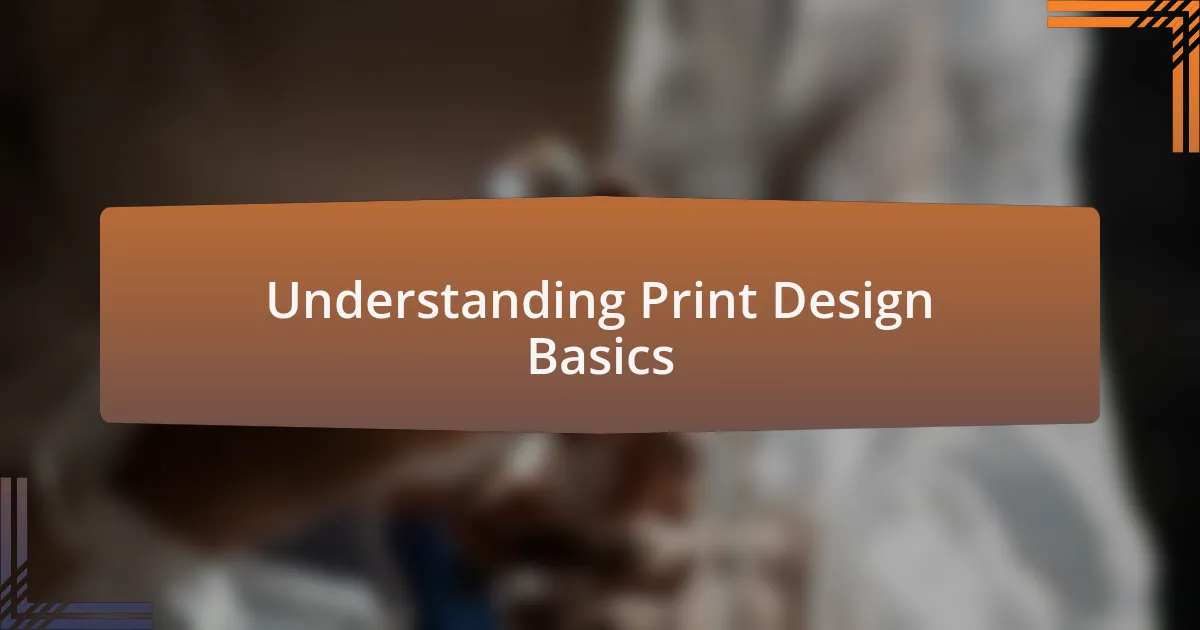
Understanding Print Design Basics
When I first dove into print design, I quickly realized that understanding the fundamentals was paramount. Color theory, typography, and layout are the building blocks of any effective design. Have you ever glanced at a beautifully designed page and felt instantly drawn in? That’s the magic of these elements working in harmony.
I vividly remember my initial struggle with choosing the right color palette. I wanted my designs to evoke feelings associated with luxury and elegance, fitting for jewelry fashion. It took a few failed attempts, but experimenting with complementary colors helped me craft a mood that resonated with my audience. Can you imagine how an unexpected color choice can change the entire perception of a design?
Typography is another critical aspect of print design that I learned to appreciate over time. The right font can communicate a brand’s personality, just like the perfect piece of jewelry can elevate an outfit. I often ask myself, does my font choice align with the message I’m trying to convey? It’s essential to grasp these basics to create designs that not only look good but also tell a compelling story.
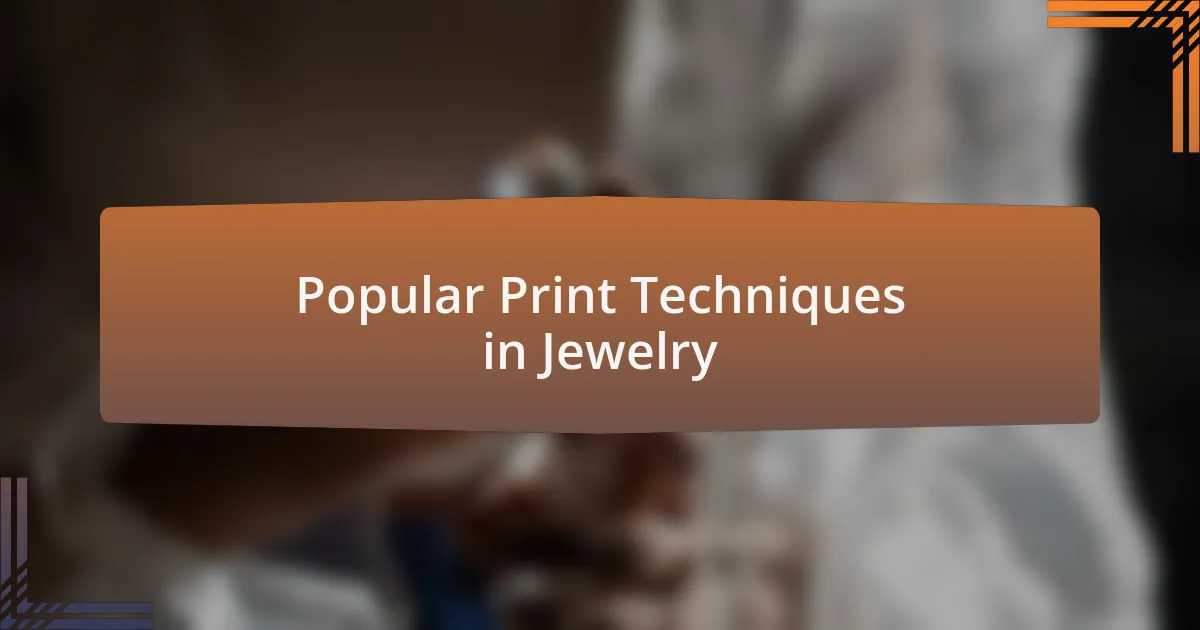
Popular Print Techniques in Jewelry
When exploring popular print techniques in jewelry, I quickly discovered the charm of screen printing. This method allows for vibrant colors and intricate designs, making it perfect for capturing the essence of a jewelry brand. I recall my excitement about using this technique for a limited edition collection — each piece seemed to come alive with every application of color. Have you ever held something that felt like a work of art? That’s what screen printing brought to my designs.
Another technique that caught my attention was digital printing. The precision and detail it offers can transform a simple design into something truly breathtaking. I remember creating a marketing piece with detailed gemstone illustrations. The clarity of the images made each stone sparkle in the print, and I could feel the awe from viewers as they appreciated the craftsmanship. It made me wonder — could digital printing be the key to showcasing more intricate designs in jewelry marketing?
Then there’s the timeless allure of lithography. I’ve found that this technique, which involves creating a plate for printing, lends an air of sophistication to promotional materials. I once used lithography for a series of promotional postcards featuring our latest collection. The tactile quality of the card combined with the elegant designs made them a favorite among clients. Wouldn’t you agree that the feel of a well-crafted card can evoke a deeper connection to a brand?
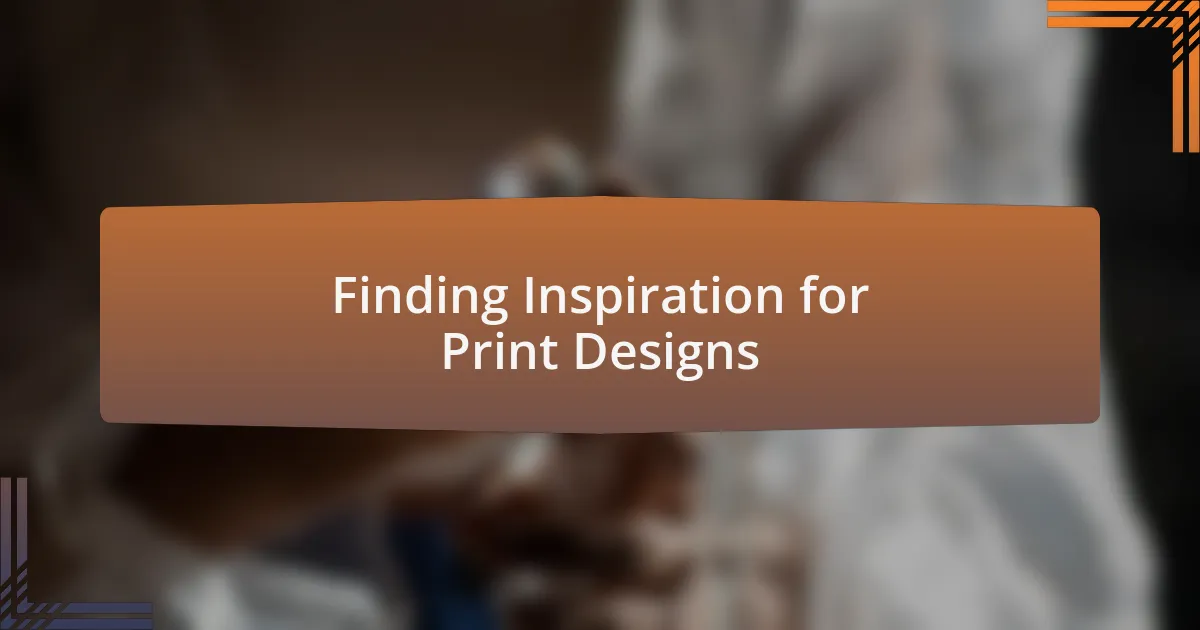
Finding Inspiration for Print Designs
Finding inspiration for print designs can often stem from unexpected places. I once stumbled upon a vintage jewelry catalog while browsing in a local thrift store, and its rich textures and color combinations sparked a whole new direction for my work. Have you ever found a forgotten gem that completely shifted your creativity? That moment made me realize that inspiration often lies in the past, waiting for someone to breathe new life into it.
Nature is another powerful source of inspiration. During a weekend hike, I became captivated by the patterns and colors of the leaves and flowers around me. I couldn’t help but think about how I could translate those organic shapes and hues into print designs that resonate with the elegance of jewelry. Have you noticed how nature’s palette can evoke certain emotions? I believe incorporating those elements into my designs not only catches the eye but also creates a deeper emotional connection with potential buyers.
Traveling, too, has been a continuous source of inspiration for me. Each city I visited offered unique cultural motifs that I could incorporate into my print designs. I particularly remember a trip to Morocco, where the geometric patterns in tile work fueled my imagination. These vibrant designs made me ponder: how can I infuse such bold elements into jewelry marketing? I take pride in translating those experiences into my work, making my print designs reflections of the world around me.
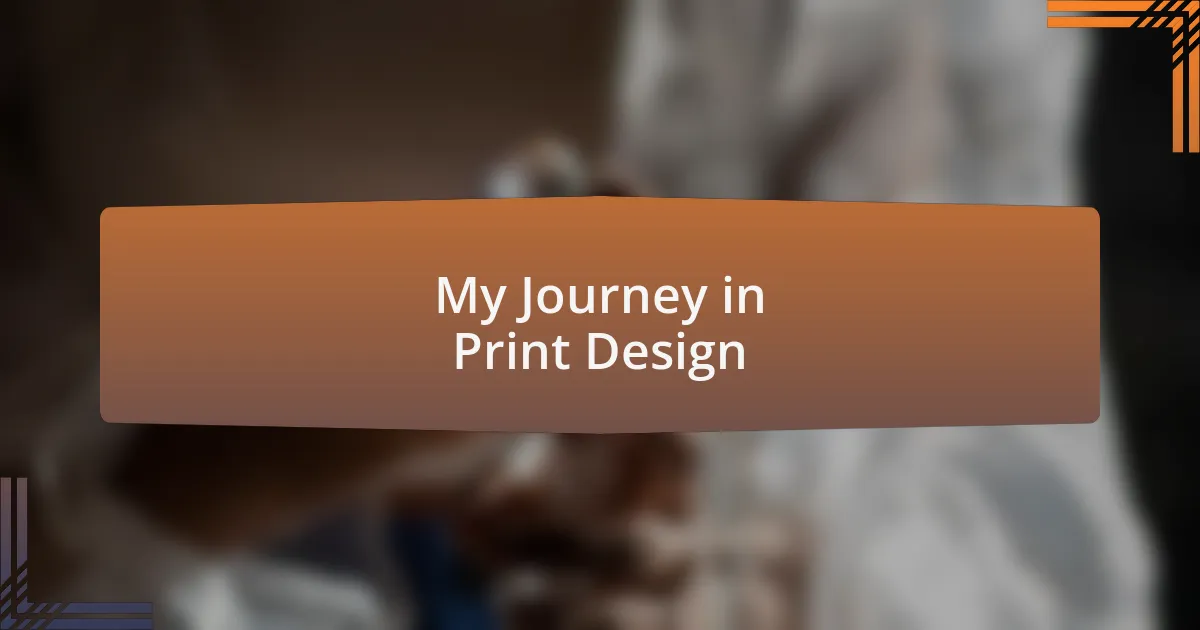
My Journey in Print Design
Embarking on my journey in print design felt like stepping into a vibrant, artistic labyrinth. The very first time I experimented with layout, I combined elements from various artistic movements—think bold Bauhaus shapes mixed with Art Deco elegance. The exhilaration of pushing boundaries made me wonder: how far can I go to capture the essence of the jewelry itself in print? Each iteration taught me to embrace both failure and success with equal grace, fueling my desire to refine my craft.
One of my most memorable projects involved recreating the allure of gemstones through print. I vividly remember spending long hours at my desk, surrounded by glimmering swatches and sketches, striving to replicate the luminosity of a sapphire. It was in those moments that I learned the art of balance—not just in colors and shapes, but also in evoking a sense of authenticity and luxury that resonated with potential buyers. Have you found a way to express your passion through design? That quest led to breakthroughs that expanded my understanding of what print could convey.
As my skills evolved, I began to infuse storytelling into my designs. I once crafted a series of prints inspired by a beloved childhood memory of my grandmother’s jewelry box. Each print represented a piece of her history, blending nostalgia with modern aesthetics. This project revealed to me the profound connection between personal stories and visual artistry. I believe that incorporating these narrative elements not only enriches the design but also fosters a compelling engagement with the audience. Have you ever considered the stories behind the designs you admire? Sharing these stories can lead to a deeper appreciation and connection with the audience.
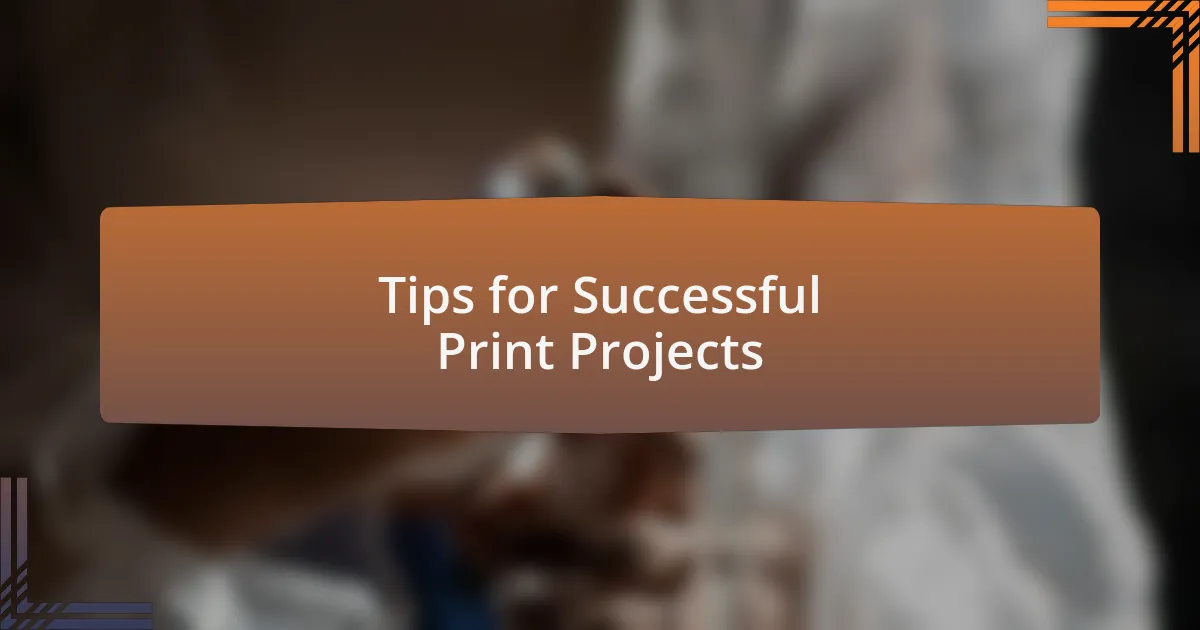
Tips for Successful Print Projects
When diving into a print project, my rule of thumb is to start with a clear vision. I once tackled a brochure showcasing a new jewelry line, and I found that sketching out my ideas on paper helped my thoughts crystallize. This initial brainstorming phase allows for the exploration of concepts without limitations—how can I make the jewelry pop? What story do I want the viewer to feel? It’s all about translating that vision into the tangible.
An essential tip I’ve learned is to prioritize high-quality images and graphics. I remember working on an ad that featured intricate details of a handcrafted necklace. We used close-up photography to highlight its stunning craftsmanship, and it completely transformed the final product. Quality visuals add depth and draw in potential customers, making them visualize owning a piece of that beauty. How do you think your audience responds to visuals? I believe they can make or break the impact of your design.
Lastly, never underestimate the power of feedback. I frequently share drafts with peers for their insights before finalizing a print piece. One time, a colleague pointed out that a color choice didn’t quite match the brand’s identity; this simple observation led to a complete redesign that resonated much more with our target audience. What about you—do you seek input on your projects? Embracing external perspectives can elevate your designs in ways you might not have initially considered.